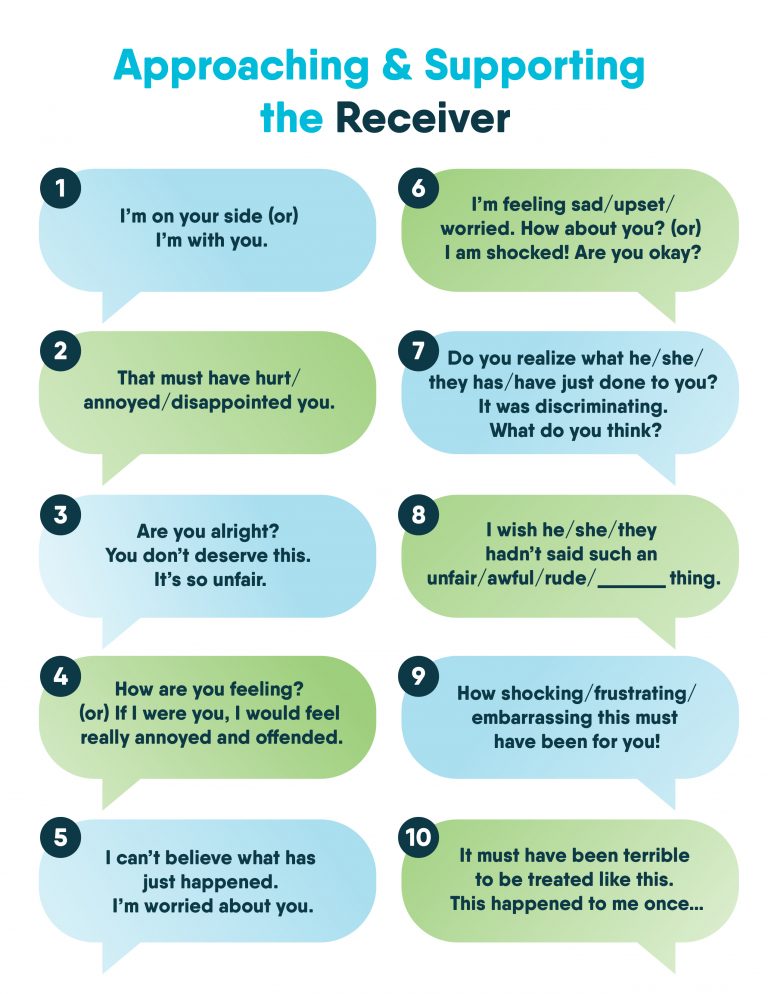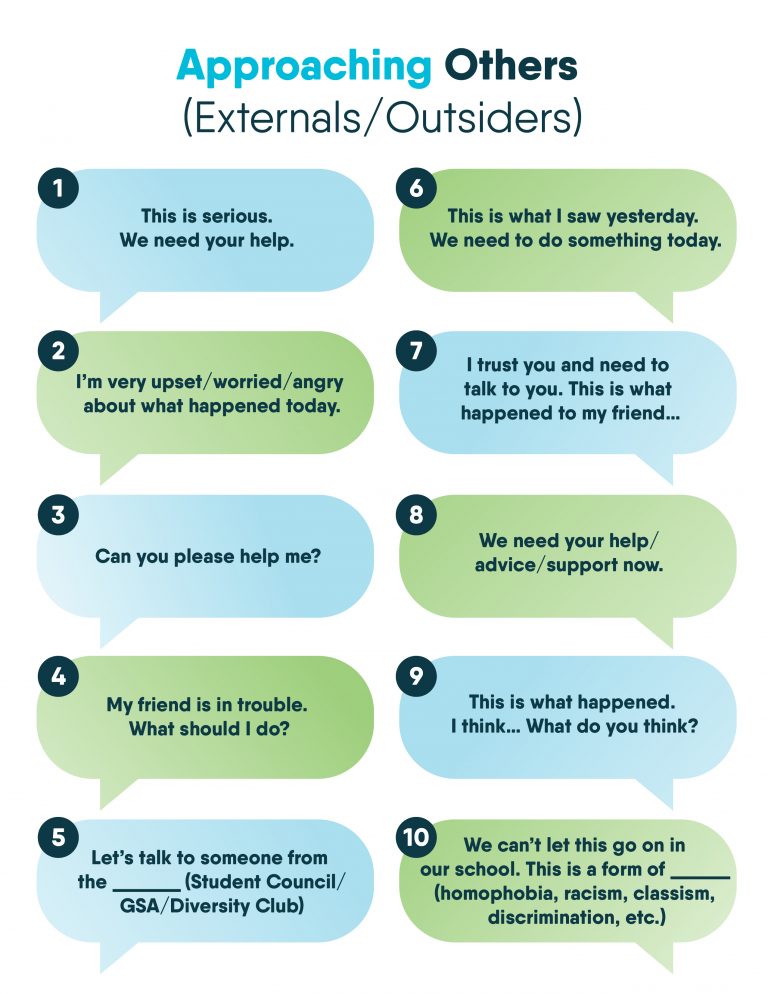We can respond in different ways when we witness a discriminatory incident. The 4 Levels below are based on Dr. Ishiyama’s Active Witnessing Model.
You may react differently during situations depending on your safety, the seriousness of the situation and your feelings. It’s important to always consider your safety and the safety of those around you before engaging. The goal is to shift from a Level 1 or 2 response to a Level 3 or 4 in a safe and effective manner – to move from being a Dis-witness or a Passive Witness to a responsible Active Witness and Ethical Witness.
1. Dis-witnessing (Not hearing, Not seeing, Not feeling, Not Doing)
A Dis-witness may:
- Join the Offender and do things like laugh along at a discriminatory joke, use a racial slur or insult or tease someone
- Walk away without concern for the Receiver
- Avoid the situation or deny it happened
They may also say or think things like:
- I didn’t see anything wrong.
- I thought it was funny.
- No one was hurt so everything was fine.
- The Receiver deserved it.
- The Receiver was too sensitive or emotional.
- The Receiver could take care of themselves.
- I didn’t want to be noticed or get involved.
- I knew the Offender(s) and I had to support them.
- It was none of my business.
2. Passive Witnessing (Hearing, Seeing, Feeling but Not Doing)
A Passive Witness may:
- Be silent but may prepare or has the opportunity to prepare to be an Active Witness
- Feel afraid for their safety or freeze and be in shock
- Feel badly and unsure what to say or do or rely on others around to respond
They may also say or think things like:
- I was scared and in shock.
- I hoped someone else would deal with it.
- I thought the Receiver’s friends would come and help.
- I was afraid of getting involved.
- I was afraid of doing the wrong thing.
- I wasn’t sure if what I said would be helpful.
- I was so upset, I couldn’t think straight.
- I was confused.
- I wanted to help but I didn’t know what to do. (I don’t have the skills, confidence and experience.)
3. Active Witnessing (Hearing, Seeing, Feeling and Doing)
An Active Witness responds with appropriate words or actions. Their response may be immediate or delayed.
An Active Witness:
- Knows who to approach in the Witnessing Triangle
- Feels safe and confident to respond
- Is able to ‘call people in’ and ‘call people out’
You can ‘Call in’ the Offender by speaking to them privately:
- When there is time and a chance to ask questions and talk about how the Offender’s words and actions affect you and the Receiver
- To try to understand and learn about the Offender’s point of view
- To encourage a shift in thinking and behaviours
- To focus the conversation on seeing and thinking about what is happening and not just reacting
You can ‘Call out’ the Offender by speaking to them publicly:
- When we need to let someone know immediately that their words or actions are not acceptable and will not be tolerated
- When we need to intervene in order to prevent further harm
- When we need to interrupt the situation and decide what to do next
4. Ethical Witnessing (Moving beyond Hearing, Seeing, Feeling and Doing)
An Ethical Witness recognizes injustice and takes action. They deal with the situation and educate others. Their actions help to change our society and institutions for the better.
An Ethical Witness:
- Understands what discrimination looks like, sounds like and feels like
- Has the skills and confidence to use Active Witnessing responses
- Teaches others how to be Active Witnesses








